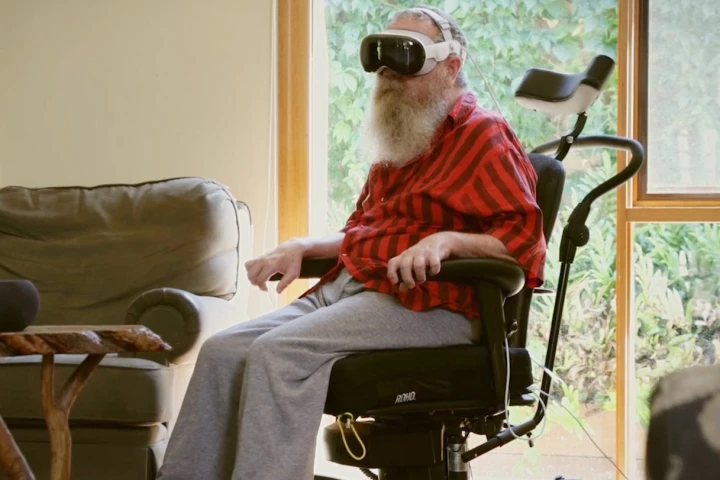Assistive Technologies
-
Apple is getting into the brain-computer interface business, reveals New York-based startup Synchron. The idea is to enable people with limited mobility use iPhones, iPads, and the Vision Pro headset by transmitting commands through their minds.
-
Love them or hate them, chatbots are here to stay. And while an increasing number of people have been turning to bots like Claude and ChatGPT for help, there's only anecdotal evidence as to their mental health usefulness. That is, until now.
-
When someone has been rendered tetraplegic by a spinal cord injury, they may still retain partial use of their wrists. A new device could help such folks lift cumbersome objects, by adding a robotic hand to the back of their dominant hand.
-
If yours is one of the almost six million US households that has a resident bird, you'll know that these big personalities are wonderful pets, but they can make a whole lot of mess. This automated luxury smart home takes care of that – and more.
-
White canes are fine for helping blind users make their way down streets, but they can't tell those users what objects, signs or scenes are in front of them. That's exactly what the Seekr is designed to do, however, using a heapin' helping of AI.
-
Exoskeletons have been helping paraplegic patients to walk for years, but the latest development from KAIST is a little different. The WalkON Suit F1 can amble over to a patient seated in a wheelchair, install itself, and get the user up and walking.
-
While the island has 0.37% the land size of the US, Taiwan has become a hub for startups, sustainable design and tech innovation. This week, 600 inventions will vie for the 'gold medal' – the Platinum Award – at the massive Taiwan Innotech Expo.
-
Carnegie Mellon spinoff Shift Robotics has launched a lighter, quieter version of its strap-on powered wheels first introduced as a Kickstarter in 2022. Like the originals, the Moonwalkers Aero are designed to give users a powered boost as they walk.
-
Synchron has announced that a trial participant has used its brain-computer interface to turn on the lights in his home, see who is at the door, and choose what to watch on the TV – hands-free and without even a voice command.
-
Folks weakened by osteoarthritis or myositis may need help with everyday tasks like watering plants, filling the kettle or peeling potatoes. The Carbonhand robo-glove is designed to support such activities, and is now available to everyone in the US.
-
We're already seeing humanoid robots entering the workplace, but when will we be able to kick back and let the service droid take care of household chores? A new video from Germany's Neura Robotics shows this dream is inching ever closer to reality.
-
Rather than cut a chunk of skull away to install a brain-computer interface like Neuralink, Synchron feeds electrodes up through the jugular vein to the motor cortex. Now the tech has enabled an ALS sufferer hands-free control of Apple's Vision Pro.
Load More











